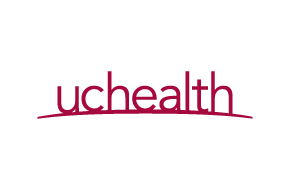
The University of Colorado Health
UCHealth’s hospitals and clinics have been trusted health care destinations for generations of Coloradans, and their specialty practices have rapidly gained a reputation for excellence nationwide.
BuildMaster has allowed UCHealth to increase automation and has allowed the E-business team to seamlessly maintain 114 application across 28 separate application groups.
The University of Colorado Health organization, aka, UCHealth is increasingly becoming a house-hold name in the Rocky Mountain region of the United States. Now, operating in 3 states, Colorado, Wyoming, and Nebraska, with approximately 441 facilities across 124 locations, UCHealth has grown exponentially over the past few years. In fact, UCH was named in the top 50 hospital rankings for 11 medical specialties in 2015-16 by U.S. News and World Report.
The Challenge:
While the team within UCHealth that uses BuildMaster is simply labeled “E-business” on the organizational chart, they are more like a highly-decorated “special ops” team, or equivalent of the infamous “Seal Team 6” called in on special assignments to trouble-shoot, and help out other teams within the organizations when critically needed. They swoop in, save the day (or week, month, etc.) and disappear onto the next project.
Many projects the E-business team works on originate in other teams needing functionality above and beyond the tool sets at their immediate disposal. The E-business team has a direct line to the CIO, and in many occasions they are tasked by the CIO specifically to help out on projects deemed a priority.
Despite its prestige, the team and organization overall were running into challenges. At its core, the main challenge was the result of a manual/non-automated build-release process that was, like most organizations’ testament to manual processes, inefficient, and error-prone. While the core challenge was the manual build-release process, a myriad of factors (challenges in their own right!) magnified, and exacerbated this core challenge. Some of these include:
- Organizational growth: UCHealth has grown exponentially in the past 3-5 years. It started as a standalone hospital, merged with 2 other hospitals only a few years ago, and has since acquired many more facilities (now 441/124 locations) to become more of a health system.
- Team growth: With growth in facilities, and growth to all teams, including the E-business team, issues were naturally going to occur. The E-business team at first attempted to maintain processes meant for a smaller team, despite growing constantly.
- Work-load growth: More locations, and more teammates, meant more applications, or “work”. The E-business team found itself using processes meant for a small teams, with a small number of applications to manage. While they were actually an increasingly large team, with an increasing number of applications to manage.
- Team distribution: More locations, more teammates, more applications. The E-business team was not centered in only one location as growth continued within UCHealth. The E-business team found itself trying to manage manual processes for more applications, amongst more teammates, from different locations.
With the culmination of all these challenges, the E-business team recognized a need for tooling and processes that could be standardized across the team and organization, eliminate manual errors, and enforce teamwork with contributors in various locations. After doing evaluations of several build automation tools, the robust functionality of BuildMaster, which provides automation for all aspects of the delivery process, emerged as the best fit.
The Solution:
While the team within UCHealth that uses BuildMaster is simply labeled “E-business” on the organizational chart, they are more like a highly-decorated “special ops” team, or equivalent of the infamous “Seal Team 6” called in on special assignments to trouble-shoot, and help out other teams within the organizations when critically needed. They swoop in, save the day (or week, month, etc.) and disappear onto the next project.
Many projects the E-business team works on originate in other teams needing functionality above and beyond the tool sets at their immediate disposal. The E-business team has a direct line to the CIO, and in many occasions they are tasked by the CIO specifically to help out on projects deemed a priority.
Despite its prestige, the team and organization overall were running into challenges. At its core, the main challenge was the result of a manual/non-automated build-release process that was, like most organizations’ testament to manual processes, inefficient, and error-prone. While the core challenge was the manual build-release process, a myriad of factors (challenges in their own right!) magnified, and exacerbated this core challenge. Some of these include:
Overall Results:
With roughly 25 new applications created since the adoption of BuildMaster, BuildMaster has automated and empowered the E-business team to maintain 114 applications, divided into 28 separate application groups.
Because of the reduction in error-prone and manual processes that BuildMaster provides, the E-business team is able to manage this number of projects within BuildMaster, as well as jump to the next project and team that needs their help. Of course once they leave a project, the structure and rigor that BuildMaster provides, allows the maintenance team to manage the transition smoothly.
In terms of future BuildMaster use, the E-business team has interesting and ambitious plans: like many health care providers, UCHealth uses many of the products from Epic. However, unlike many of their peers, the E-business team has customized several different Epic products extensively for UCHealth.
The challenge arises when Epic releases a new version, and the customizations are lost when updating to the newest version. Soon the E-business team will be storing their Epic customizations in BuildMaster, as a “closed system,” wherein the customized elements of Epic products can be deployed across multiple environments, and seamlessly re-integrated into use after upgrading to Epic’s newest version.
This plan is only possible because of the time BuildMaster will save the E-business team from having to recode their customizations, while avoiding manual errors when deploying customizations across the UCHealth network. We’re ecstatic to be part of the E-business team’s success!


